Overview:
The MRCLinkdb documents more than 790 human and 670 mouse metabolite L-R interactions. Additionally, the database has compiled information on over 1,900 enzymes and 260 transporters associated with these metabolites. MRCLinkdb introduces a new webserver dedicated to the analysis of the metabolite L-R interaction based intercellular communication.
The homepage is displayed in the following Fig 1-1.
1. Main functions of the platform are provided in menu bar form (boxed in red).
2. Introduction and overview for MRCLinkdb.
3. Quick search for users.
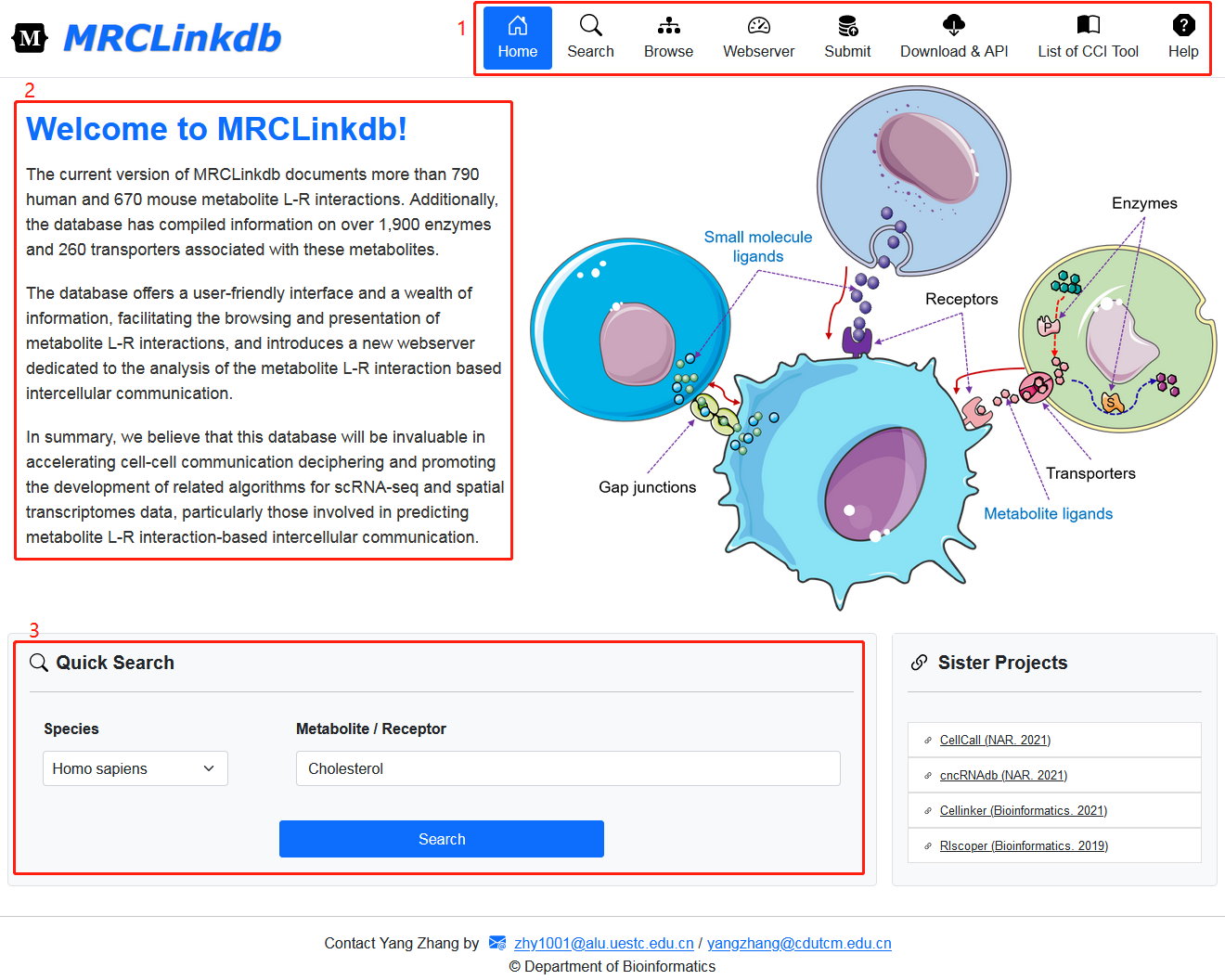
Fig 1-1. Home page
The search page is displayed in Fig 2-1 and Fig 2-2:
Fig 2-1 Search page of Exact Search:
1. Select to search page of Exact Search.
2. Carefully select a dataset: seven choices are provided (Metabolite Name/HMDB ID/PubChem CID/PubChem SID/Gene Symbol/Entrez ID/Uniprot ID).
3. Input a keyword corresponding to selected dataset.
4. Select the species to filter the search (Homo sapiens or Mus musculus).
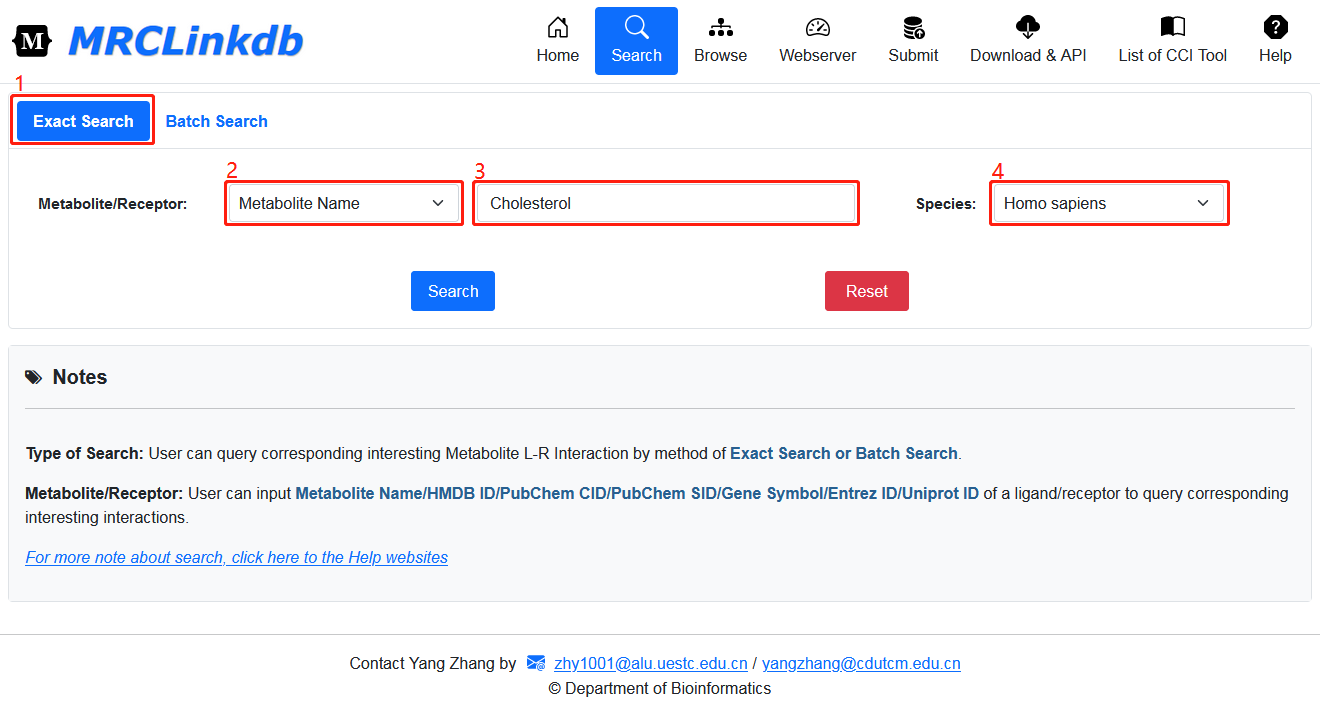
Fig 2-1. Search page of Exact Search
Fig 2-2 Search page of Batch Search:
1. Select to search page of Batch search.
2. Input or upload Metabolite Name/HMDB ID/PubChem CID/PubChem SID/Gene Symbol/Entrez ID/Uniprot ID list of Metabolite/receptor to query corresponding interesting interactions.
3. Select the species to filter the search (Homo sapiens or Mus musculus).

Fig 2-2. Search page of Batch Search
To help users view and interactively analyze metabolite-receptor interactions, the result page provides a table and an embedded sankey diagram web tool.
Fig 3-1:
1. The table of the search results.
2. Total sum of results.
3. Download your search results.
4. Click to link to detail page.
5. Click to turn the page.
6. Metabolite list.
7. Receptor list.
8. Download the sankey diagram.
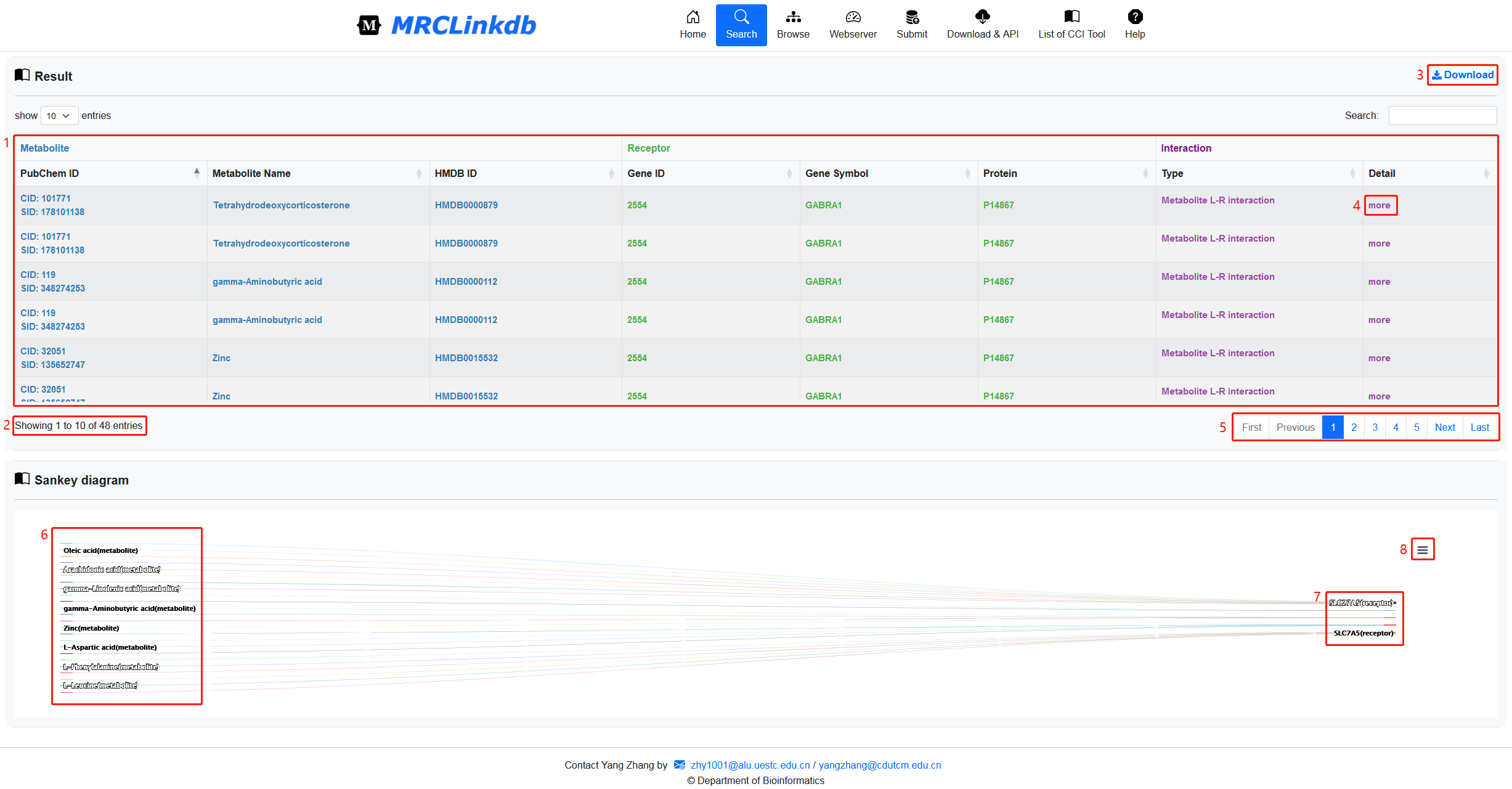
Fig 3-1. Search result page
In the detail page, you can get the detail information of the metabolite-receptor interaction.
Fig 4-1: detail page of metabolite L-R interaction
1. Information of interaction: including interaction ID, interaction type and species.
2. Information of metabolite/receptor: including Metabolite Name, PubChem CID/SID, HMDB ID, Gene symbols, Entrez gene ID, Uniprot ID or subunits for receptor complex.
3. Detail information of the metabolite ligand, including Metabolite Name, Formula, Kingdom, Super Class, Class, Canonical SMILES and 2D structure of metabolite.
4. List of enzymes involved in the metabolite ligand, including their Metabolite Names, Gene Symbols, UniProt IDs, Reactions related to the metabolite, and their roles. Use 's' to indicate when the metabolite ligand serves as the substrate for the enzyme, and 'p' to indicate when the metabolite ligand is produced by the enzyme.
5. List of transporters protein involved in the metabolite ligand.
6. The expression of receptor and the relative genes of enzymes and transporters protein in scRNA-seq data across different tissues and cell types.
7. The expression of receptor and the relative genes of enzymes and transporters protein in bulk RNA-seq/microarray data across different tissues.
8. Source of the interaction (publications and/or database).

Fig 4-1. Detail page of metabolite L-R interaction
Notes:
Human and mouse scRNA-seq data across different tissues and cell types were collected from the MCA database, a total of 344000 human cells (refers to 52 cell types and 35 tissues) and 174455 mouse cells (refers to 44 cell types and 26 tissues) were adopted
The human gene expression profiles across 62 tissues were collected from The Human Protein Atlas project (RNA consensus tissue gene data), and the mouse expression profiles across 39 tissues were collected from TISSUES 2.0 database (GeneChip data).
Users can browse the data by species and interaction types (by click on the correct icon in Figure 5-1). Moreover, the statistics information of MRCLinkdb is also presented in browse page.
Fig 5-1:
1. Browse by species and interaction types.
2. Statistics information of MRCLinkdb.
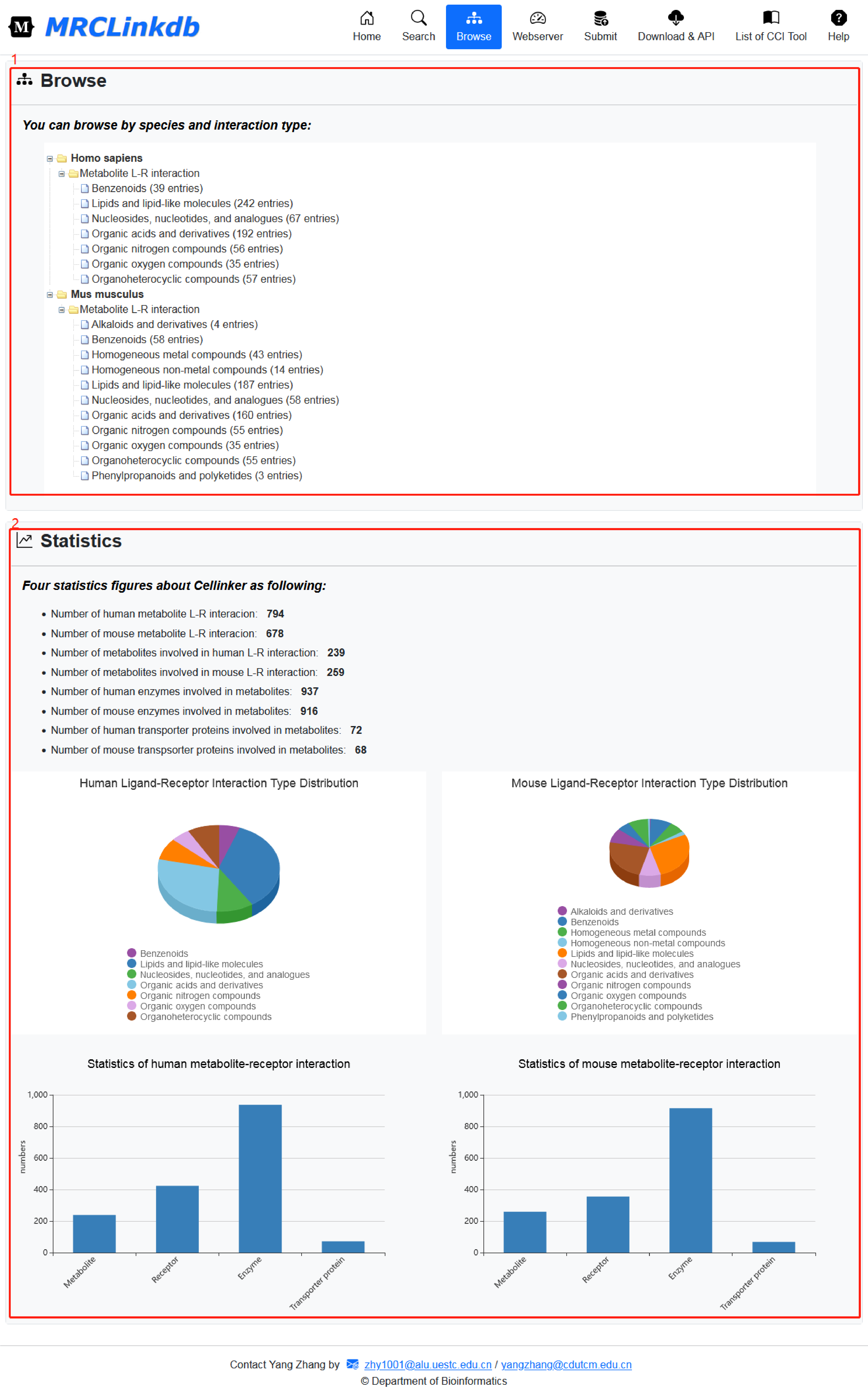
Fig 5-1. browse page
For the convenience of users, MRCLinkdb launched web server for intercellular communication analysis.
Fig 6-1 The analysis of the metabolite L-R interaction:
1. Select species of scRNA-seq data.
2. Upload the meta file of your own scRNA-seq data (max 20 MB), zip file is recommended.
3. Upload the counts file of your own scRNA-seq data (max 20 MB), zip file is recommended.
4. The minimum ratio of expressed metabolite ligand/receptor in a cell type.
5. The threshold of the P-value (permutation test).
6. Number of statistical iterations of the permutation test (max 1000).
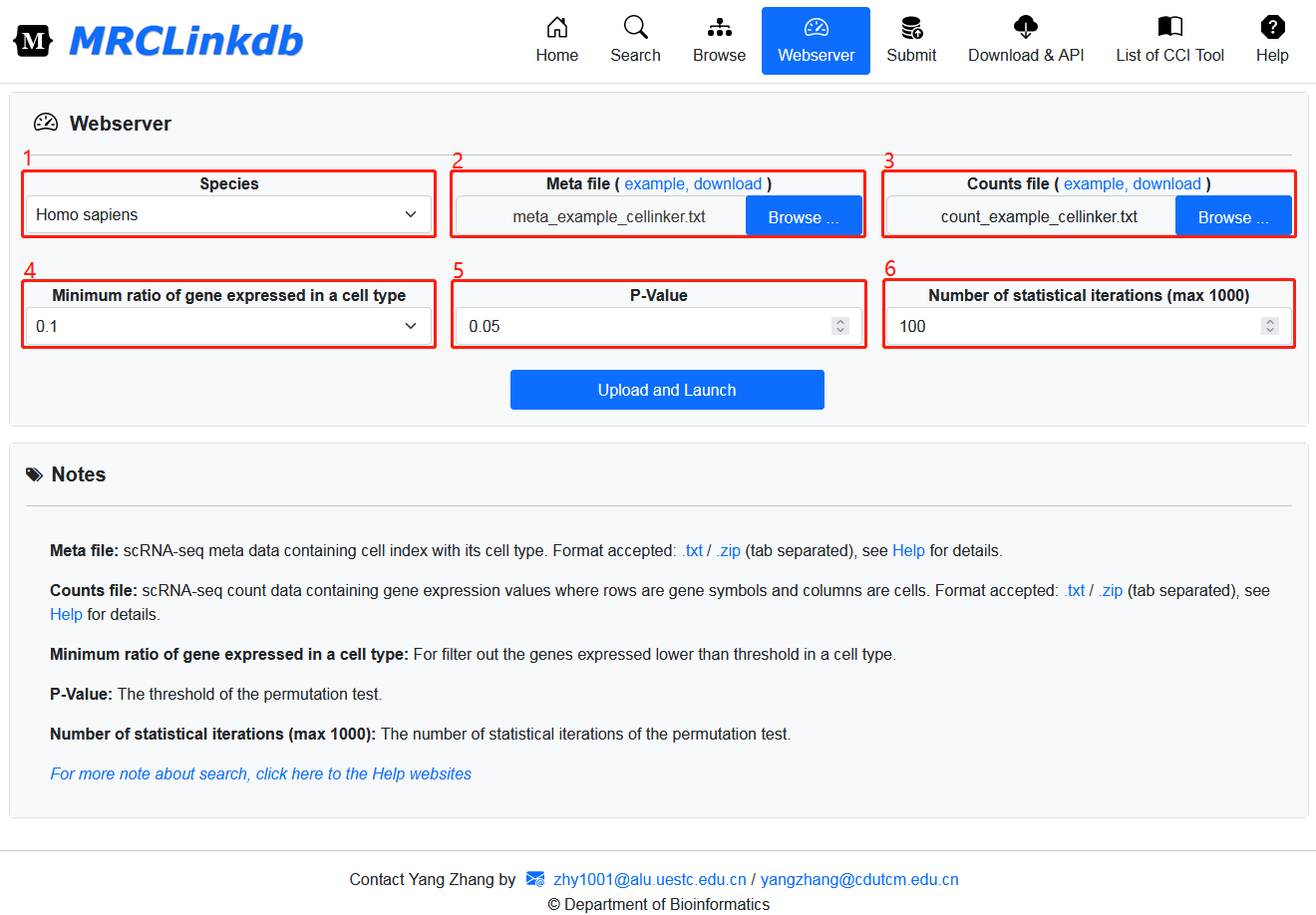
Fig 6-1. webserver page
The format of the meta file is as follow table:
1. The first column: cell IDs.
2. The second column: cell types.
| X397_Dendritic.cells | Dendritic.cells |
| X261_NK.cells | NK.cells |
| X607_T.cells | T.cells |
The format of the counts file is as follow table:
1. The first column: gene symbols.
2. The first row: cell IDs.
3. Other place: the expression values (counts or TPM) for a gene in a cell.
| X261_NK.cells | X607_T.cells | X501_T.cells | X383_Dendritic.cells | |
| TNFRSF18 | 0 | 3.204732 | 0 | 0 |
| TNFRSF4 | 7.881338 | 0 | 0 | 0 |
The result page provides an embedded bubble chart web tool to display the results. (see Fig 6-2).
1. Download the score file.
2. Download the P-value file.
3. Download the bubble chart.
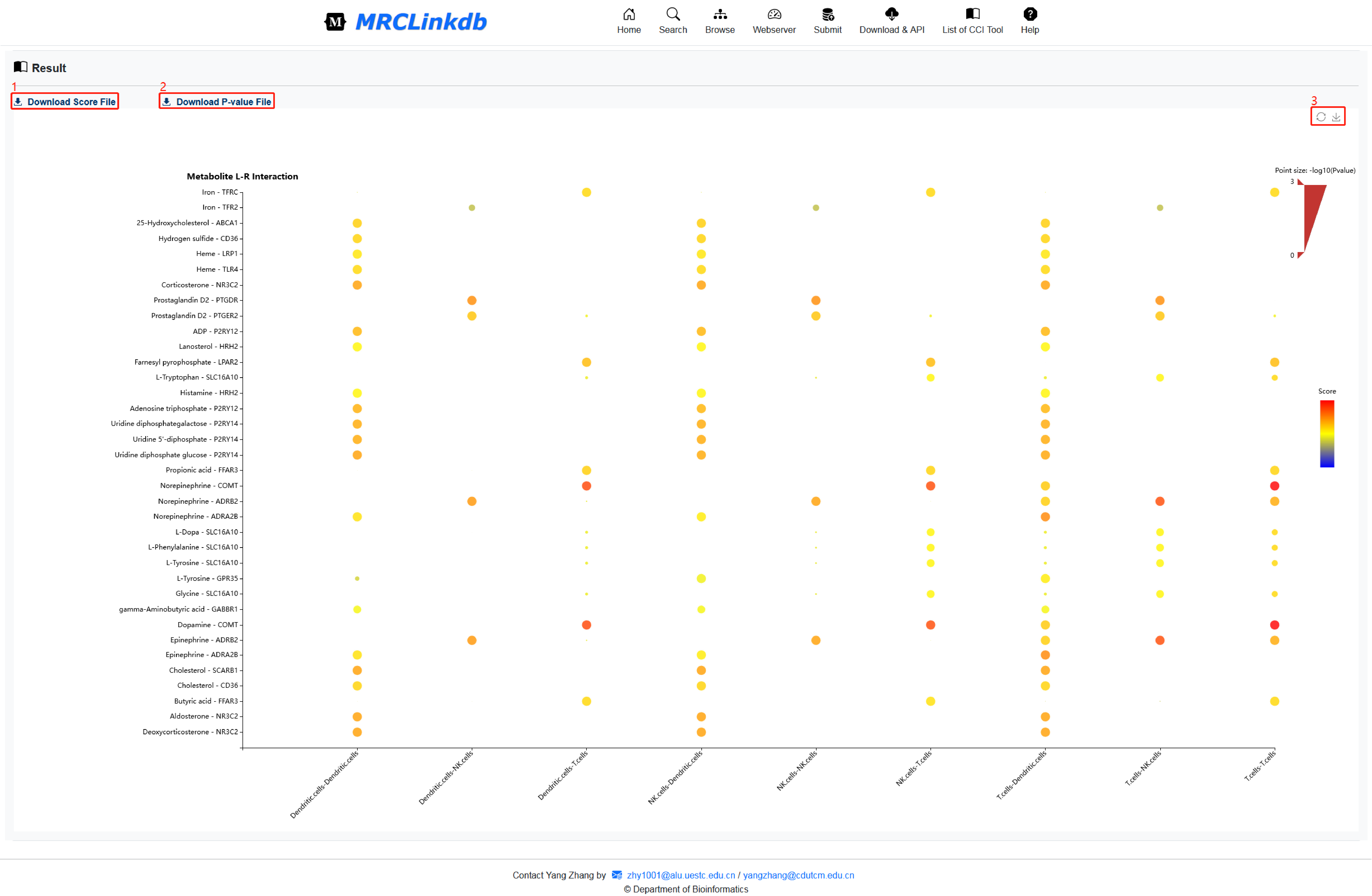
Fig 6-2. the results page of the webserver
Notes:
The results of the analysis contain two measures, score and P-value (default: P < 0.05).
Over the past three years, over 70 bioinformatics methods and resources focusing on cell-cell communication prediction have been published. To provide users with a quick overview of the latest advancements in cell-cell communication prediction research, MRCLinkdb has curated a list of relevant papers on its database website (publications of CCI Tools). Moving forward, we will continue to update this list.
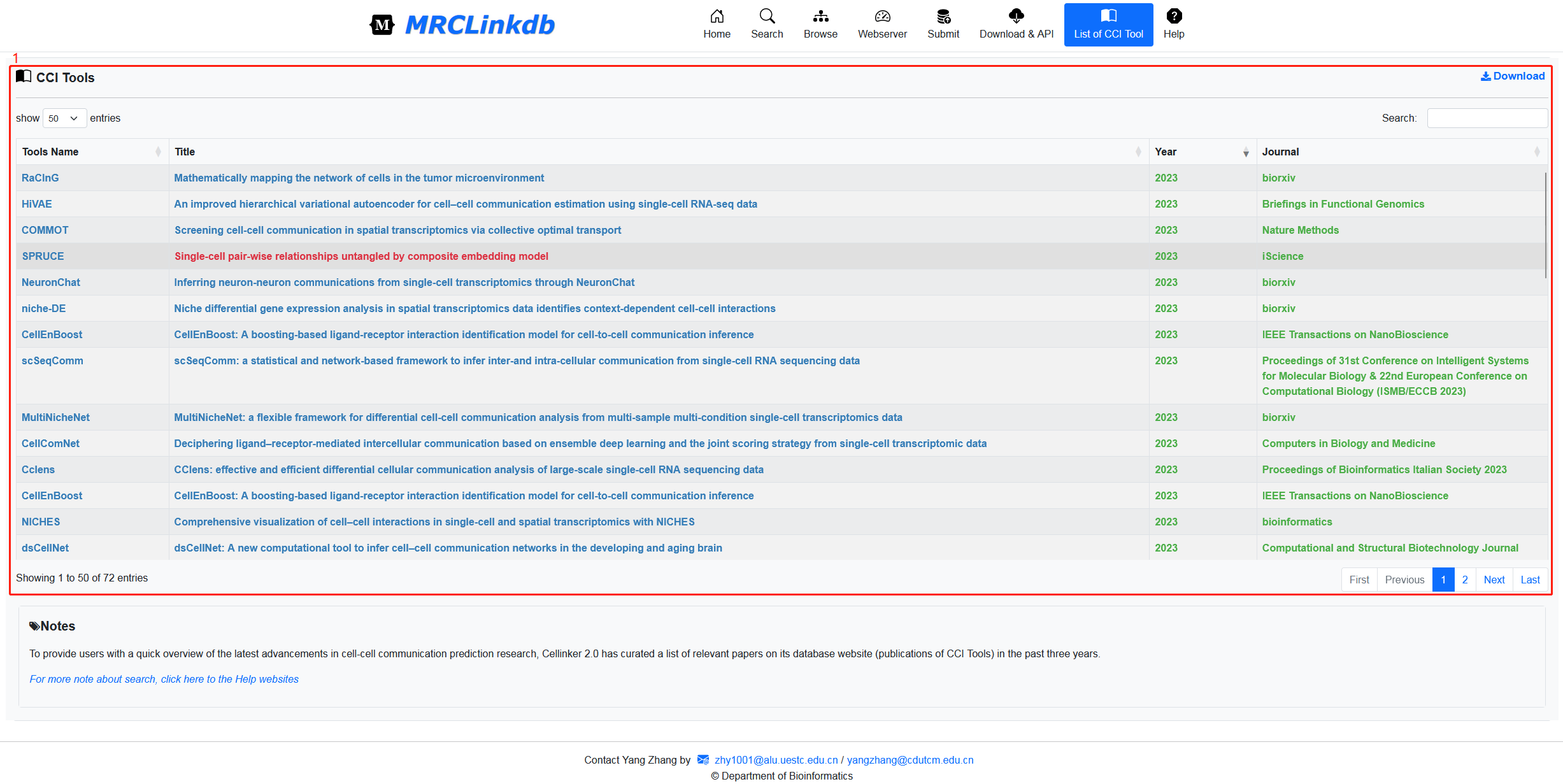
Fig 7-1. Page of publications of CCI Tools
